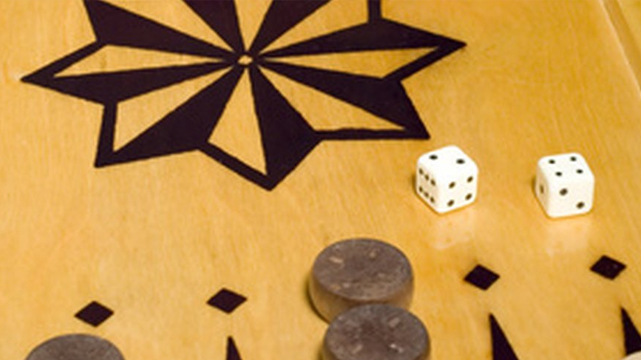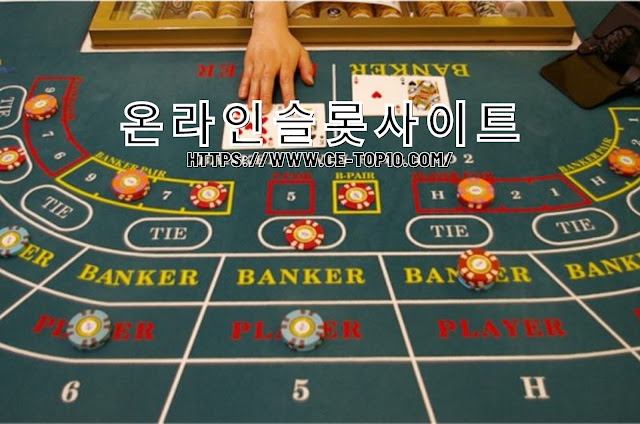8 Gambling Games That Are Less Common (International Edition)
8 Gambling Games That Are Less Common (International Edition)
There are a lot of interesting shots in the dark saw as around the world. Contingent upon where you're from, a portion of these games might be natural to you. Many games that have gone with individuals have changed over the long haul. As a matter of fact, a portion of the more seasoned variants of games played today are as yet played in different regions of the planet.
Each of the less popular games on this rundown can in any case be appreciated in present day. Some must be tracked down in homes, carried on as custom, while others can be found at gambling clubs and bars. All can be bet on and some have genuinely great chances.
1 - Faro

You'll be unable to track down the round of faro in a club. In the United States and Canada, faro was the round of decision in the nineteenth hundred years. Around 1882, more cash was bet playing faro in the US than some other game. It wasn't till the far and wide prevalence of poker in the mid twentieth century according of idnes magazine that faro started to see a slump.
Albeit initially played with the European 32-card deck, the game was played all the more as of late with the standard 52-card deck. Games spun around a faro board that contained a duplicate of the relative multitude of cards in a given suit (typically spades).
Players bet on which cards the seller will flip, whether they are sequential, and what grouping the cards are flipped in. Similar as roulette, players could put down wagers between cards on the faro board and, surprisingly, invert wagers with the utilization of a unique token.
Faro was known to manipulated be without any problem "gaffed" or. Indeed, even at the level of its ubiquity, faro's standing for areas of strength for a benefit was broad. Sellers would utilize uniquely planned vendor boxes and stacked decks to attract cards matches (as per the principles, the house could guarantee around 50% of the wagers).
Boxes would likewise be fitted with mirrors, so the vendor could see cards before they were managed, permitting vital wagering. Vendors would likewise utilize skillful deception to revise wagers at a bustling faro table, moving players' chips to losing bets.
2 - Two-Up
The round of two-up is an Australian improvement of the exemplary coin flip. Players utilize a lash of wood with two coin-sized indentions called a "kip" to all the while flip two coins. There are just three potential results; the coins will land with the two sides fair warning (front), tails up (switch), or a blend (Ewan). Rules differ at the same time, by and large, the spinner's wagered is covered by another player, the spinner should wager on heads, and players take side wagers.
Like most 카지노사이트 games, there are varieties. Two-up can be played with various standards for the success/misfortune results, in a club with the house matching player's wagers, and with three coins rather than two. Players can likewise wager on a progression of rolls, like winning on the off chance that dissimilar to sides were moved multiple times (called "odding out").
The round of two-up became related with Australian troopers during World War I.
After troopers returned, unlawful betting houses started offering "two-up schools," most outstandingly in Sydney, yet additionally somewhere else in the country. It later turned into a conventional round of Anzac Day festivities (an Australian occasion remembering military help).
3 - Tempeln
Tempeln is a game like faro, played most broadly during the 1700s, in the district that would later become Germany. Famous names for the game at the time included "my auntie, your auntie" and German faro. You'll frequently see tempeln depicted as a less complex rendition of basset, a game refered to as the beginnings of both faro and tempeln.
The game would be played with either a 32-or 52-card deck. Likewise like faro, a wagering framework comprising of each card esteem in a set would be drawn onto which players would put down their bet. This lattice would be molded like a sanctuary (subsequently the name) and chalked onto a table for interactivity.
Players bet on which cards will be drawn by the vendor. Wagers can be put anyplace on the matrix like faro. The main card managed addresses the vendor, the second card for the players, trailed by two additional cards shared by the table. With each progressive card, players have the choice to increment or lessening their bets. In tempeln, players don't wager on however many results as basset or faro.
4 - Yablon

The round of yablon can allude to a few comparable games, most eminently red canine poker and acey-deucey. These games share many principles for all intents and purpose and contrast just somewhat. Both are played with three cards, players just bet on the result of the third card, and suits are insignificant.
Interactivity for the most part observes similar guidelines; two cards are managed and players bet on whether the third card falls inside the initial two. Assuming the principal cards managed are successive and equivalent players bet on whether the third is sequential, the hand is rejected. In acey-deucey, players pick whether an expert falls toward the start of a grouping or the end.
Another component of yablon is that players GET MORE INFO progressively add to the wagering pool assuming matching cards keep on being flipped. Assuming the third card falls outside the initial two cards, players add what they bet to the pot. In the event that the third card matches the upsides of the initial two cards, players add twofold to the pot, and assuming the third card matches the initial two, the player should significantly increase their bet.
5 - Teen patti
Youngster patti is a game beginning in India. It is played in much the same way to the English game three-card boast and it's occasionally called blaze or flush. Like poker, adolescent patti follows wagering and playing stages. It's played with a standard 52-card deck and can oblige up to 10 players.
The objective of adolescent patti is to build the wagering pool and win the best three-card hand. Cards are just managed once and speculators should play the hand they are managed or overlay. Like three-card boast, players have the choice to see other players' cards, changing the pot sum or constraining players to overlay.
Players can likewise play "blind" (never taking a gander at their hand), compelling different players to twofold or even triple wagers to proceed with play.
There are various varieties of adolescent patti. Games can be played with multiple cards per hand, with cards alloted "wild" values, and local area style (with shared cards like Texas hold'em).
6 - Trente et Quarante
Trente et Quarante (French for 30 and 40) is otherwise called Rouge et Noir (red and dark). It's a French game starting in the seventeenth 100 years and can in any case be tracked down in a few European gambling clubs. The game is played on an exceptional table and requires two sellers.
The game is played with six 52-card decks. Cards are managed in two lines, one addressing red (upper column) and another dark (base column). Each card has a worth of one through 10; with aces being one, court cards being 10, and pip cards doled out their mathematical worth. Each line is managed until it approaches somewhere in the range of 30 and 40. The line which gets nearest to 30 is the triumphant column.
Players have four choices for wagering. Players can wager on the triumphant column being red or dark. Players can likewise wager on whether the triumphant column (red or dark) is a similar variety as the primary card in the line (same) or its inverse (opposite). On the off chance that the two columns amount to 31, a unique condition is called and the player's wagers are kept until the following game. If players have any desire to pull out their wagers before the following arrangement, they should relinquish half to the vendor.
7 - Crown and Anchor
Crown and Anchor was a game played by mariners in the Royal Navy as far back as the eighteenth 100 years. The game includes throwing three exceptional dice and wagering on the result. It's actually played in the Channel Islands and Bermuda on unique events.
Players bet on six images: crown, anchor, jewel, spade, club, and heart. Card sharks can make wagers on numerous images. The player throws three dice that include the six images rather than standard pips. The vendor returns the player's stake and takes care of that sum for each matching dice. The speculator relinquishes any misfortunes to the house.
Crown and Anchor is like numerous potentially more established games. Other European forms of the game are tracked down in Belgium and France. Fundamentally the same as games including wagering on exceptional six-sided dice with extraordinary images can be tracked down in Nepal, China, and Vietnam.
8 - Casino War
Gambling club War is an exclusive 바카라사이트 game importance it is licensed by an organization. It was made by SFHL amusement, Inc. what's more, is found at club in the United States. It's designed according to the exemplary game played by kids all around the world and plays basically the same.
Playing Casino War is finished with six standard 52-card decks. Cards are in rising worth with aces being high. Speculators play against the house and, in case of a tie, a player should twofold their bet to play another hand or lose a portion of their bet. Players can likewise wager on the occasion of a bind with the house paying out 10 to 1.
End
These intriguing games can give an invited change to your game evening or gambling club insight. Next time you play poker, look into the standards and attempt a couple of rounds of faro or high schooler patti. Purchase a kip on the web and play some two-up with your companions. A portion of these games are tracked down in distant spots, yet with enough imagination, you can play your own forms at home.





Comments
Post a Comment